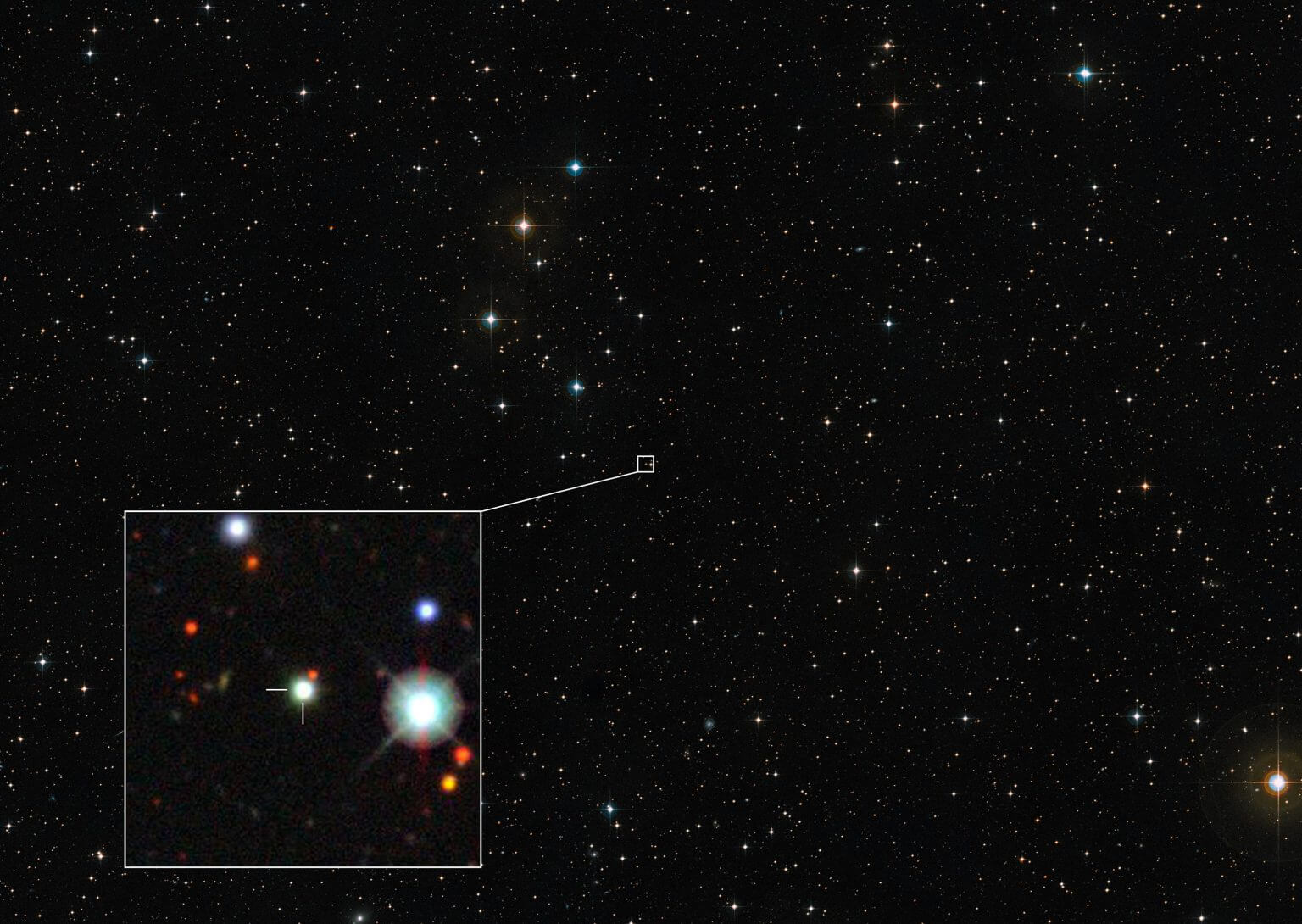The material being pulled toward this disk-shaped black hole emits so much energy that J0529-4351 is more than 500 trillion times brighter than the Sun

Astronomy and astrophysics observations made with the European Southern Observatory's (ESO) Very Large Telescope (VLT) in Chile have revealed the brightest and brightest quasar ever observed, created by proximity to the fastest-growing black hole known, which is gaining mass at the rate of one sun per day .
The quasar in question, J0529-4351, is the bright core of a distant galaxy centered by a supermassive black hole. This black hole, attracting material from around it, is now known to be the fastest growing black hole ever discovered, with a mass of 17 billion times the mass of the Sun and growing in mass equivalent to another sun each day.
The black holes that power quasars collect material from their surroundings in such an energetic process that it emits enormous amounts of light. So much so that quasars are among the brightest objects in our planet, meaning that even distant quasars are visible from Earth. In general, the brightest quasars indicate the fastest growing black holes.
The material being pulled toward this disk-shaped black hole emits so much energy that J0529-4351 is more than 500 trillion times brighter than the Sun. "All this light is coming from a hot absorption disc that is seven light-years across, so it must be the largest absorption disc in the universe," says Samuel Lai, a PhD student at the Australian National University (ANU) and co-author of the study. Seven light years is a very large distance, equivalent to about 66,000 solar systems like ours.
More of the topic in Hayadan:
- The most distant quasar to date has been discovered
- The galaxy photographed by the world's largest telescope just because of its beauty
- The five quasars are figures of the same quasar - a rare photograph of the Hubble
- Yuri Milner's Breakthrough Starshot project will fund a search for planets in the Alpha Centauri system
- A telescope with a diameter of 42 m will investigate the beginning of the universe
